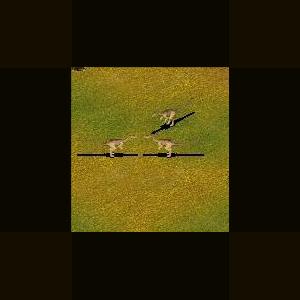About This File
Megapnosaurus
Megapnosaurus (meaning "big dead lizard", from Greek = "big", = "not breathing", "dead", = "lizard") was a dinosaur of the theropod family Coelophysidae, formerly called Syntarsus (named by Raath, 1969), living during the Early Jurassic. It was renamed by American entomologist Dr. Michael Ivie (Montana State University of Bozeman), Polish Australian Dr. Adam Slipinski, and Polish Dr. Piotr Wegrzynowicz (Muzeum Ewolucji Instytutu Zoologii PAN of Warsaw), the scientists who discovered that the genus name Syntarsus was already taken by a colydiine beetle described in 1869.
Some paleontologists did not like the name Megapnosaurus. This was partially because taxonomists are generally expected to allow original authors of a name to correct any mistakes that may have arisen from their work. Raath was aware of the synonymy between the dinosaur Syntarsus and beetle Syntarsus, but the group who published Megapnosaurus had been led to believe Raath was deceased and proceeded accordingly. Megapnosaurus remains a valid name, though whether it can be treated as synonymous with Coelophysis is an open question.
It is almost identical to Coelophysis, and Yates (2005) suggested that Megapnosaurus was possibly synonymous with Coelophysis. In 2004, Raath co-authored two papers in which he argued that "Syntarsus" (Raath continued to use the old, invalid, name) was a junior synonym of Coelophysis.
Megapnosaurus measured up to 3 meters (10 ft) long from nose to tail and weighed about 32 kilograms (70 lb). The bones of 30 Megapnosaurus individuals were found together in a fossil bed in Zimbabwe, so paleontologists think it may have hunted in packs. The various fossils attributed to Megapnosaurus have been dated over a relatively large time span - the Hettangian, Sinemurian, and Pliensbachian stages of the Early Jurassic - meaning the fossils represent either a highly successful genus or a few closely related animals all currently assigned to Megapnosaurus.
Megapnosaurus is a good example of how dinosaurs spread across the globe from their ancestral habitats (which was possibly South America). This small predator had the same basic features found in early dinosaurs, and its appearance in both Africa and the southwestern U.S. indicates that it migrated through the continents, which at the time were joined together as Pangaea. There is species-level differentiation between the African and U.S. specimens, again supporting the migration and adaptation theories.
The African species (M. rhodesiensis) is known from almost 30 specimens. The North American species (M. kayentakatae) had small crests and may show an evolutionary step toward later and larger coelophysoids, such as the more derived Dilophosaurus. Both possess a weak joint between the premaxillary and the maxillary bones, creating a hooked premaxillary jaw. This led to the early hypothesis that dinosaurs such as these were scavengers, as the front teeth and bone structure were thought to be too weak to take down and hold struggling prey.



Recommended Comments
There are no comments to display.
Create an account or sign in to comment
You need to be a member in order to leave a comment
Create an account
Sign up for a new account in our community. It's easy!
Register a new accountSign in
Already have an account? Sign in here.
Sign In Now